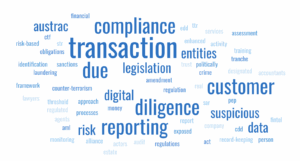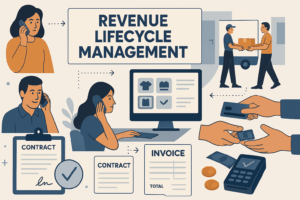In an era where fraud prevention and regulatory compliance are paramount, accountants and tax agents must adapt to new identity verification requirements. Ensuring the legitimacy of client identities not only protects your practice but also builds trust with your clients. This blog post will guide you through the essentials of tackling new ID verification requirements, leveraging best practices and tools.
Proof of Identity Checklist for Tax Agents
When verifying a client’s identity, having a comprehensive checklist is crucial. Here’s a proof of identity checklist for tax agents to streamline the process:
- Personal Identification Documents:
- Passport
- Driver’s License
- National ID Card
- Financial Documents:
- Bank Statements
- Financial Reports
- Additional Documentation:
- Utility Bills
- Proof of Address
- Verification Methods:
- Digital Signature
- Electronic Signature
- Biometric Data (if applicable)
Key Steps for Proof of Identity in Australia
As an Accountant in Australia, adhering to local regulations and standards is essential. Here are the key steps for verifying a client’s identity:
- Collect Relevant Documents: Ensure you have all necessary identification documents, such as a driver’s license or passport, and additional documents like bank statements or financial reports.
- Use Secure Verification Solutions: Implement secure ID verification software like GreenID or MemberCheck to automate and secure the verification process.
- Employ ID Verification APIs: Utilise ID verification APIs to integrate seamless verification processes into your existing systems for efficient client management. Have a system integrator, like Argo Logic, incorporate this into your Salesforce CRM.
Reference to TPB(PN) 5/2022 Proof of Identity Requirements
According to the Tax Practitioners Board Practice Note TPB(PN) 5/2022, all registered tax and BAS agents must adhere to strict proof of identity requirements for client verification. This ensures that the identity of clients is properly verified to prevent fraud and maintain compliance with regulatory standards. The practice note outlines the necessary steps and acceptable forms of identification, which include:
- Personal identification documents such as passports, driver’s licenses, and national ID cards.
- Financial documents such as bank statements and financial reports.
- Additional verification methods, including digital and electronic signatures.
The Role of Digital and Electronic Signatures
Digital and electronic signatures play a significant role in modern ID verification processes. They provide a secure and efficient way to verify documents without the need for physical signatures. Here’s how to implement them effectively:
- Digital Signatures: Digital signatures use cryptographic techniques to provide a high level of security and authenticity.
- Electronic Signatures: Electronic signatures, while not as secure as digital signatures, offer a convenient and legally accepted method for signing documents online.
Leveraging Technology for ID Verification
Technology can greatly enhance the efficiency and security of your ID verification processes. Here are some solutions to consider:
- ID Verification Software: Use specialized ID verification software to automate the verification process. Tools like GreenID and MemberCheck offer robust solutions for verifying client identities.
- Mobile ID Verification: Implement mobile ID verification solutions to allow clients to verify their identity using their smartphones, providing convenience and flexibility.
- ID Verification API: Integrate ID verification APIs into your existing systems, such as Salesforce, to streamline and automate the verification process.
Practical Tips for Accountants
To ensure compliance and efficiency in your ID verification processes, follow these practical tips:
- Keep Updated with Regulations: Stay informed about the latest ID verification regulations and standards relevant to your practice.
- Educate Your Clients: Inform your clients about the importance of ID verification and guide them through the process, making it as seamless as possible.
- Maintain Secure Records: Ensure all client identification documents and verification records are securely stored and accessible only to authorized personnel.
- Regularly Review Processes: Periodically review and update your ID verification processes to incorporate new technologies and comply with changing regulations.
Conclusion
By adopting a comprehensive approach to client identity verification, accountants can ensure compliance, prevent fraud, and build stronger relationships with their clients. Utilising a proof of identity checklist, embracing digital and electronic signatures, and leveraging modern ID verification solutions will streamline your verification processes and enhance security.
For more insights and solutions, explore how Argo Logic’s IT services and ID verification solutions can support your practice in meeting these new requirements. Contact us today to learn more.




